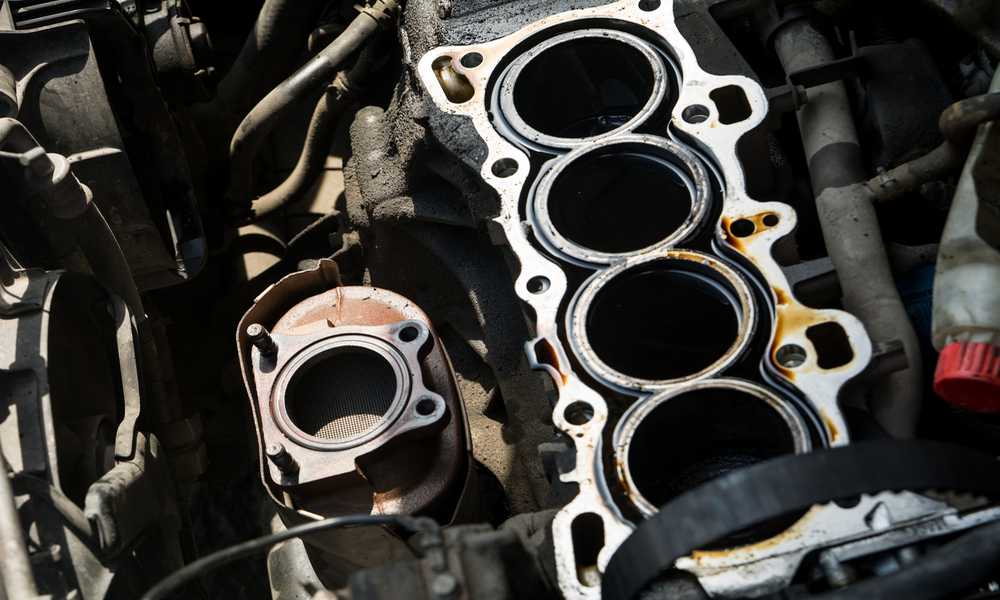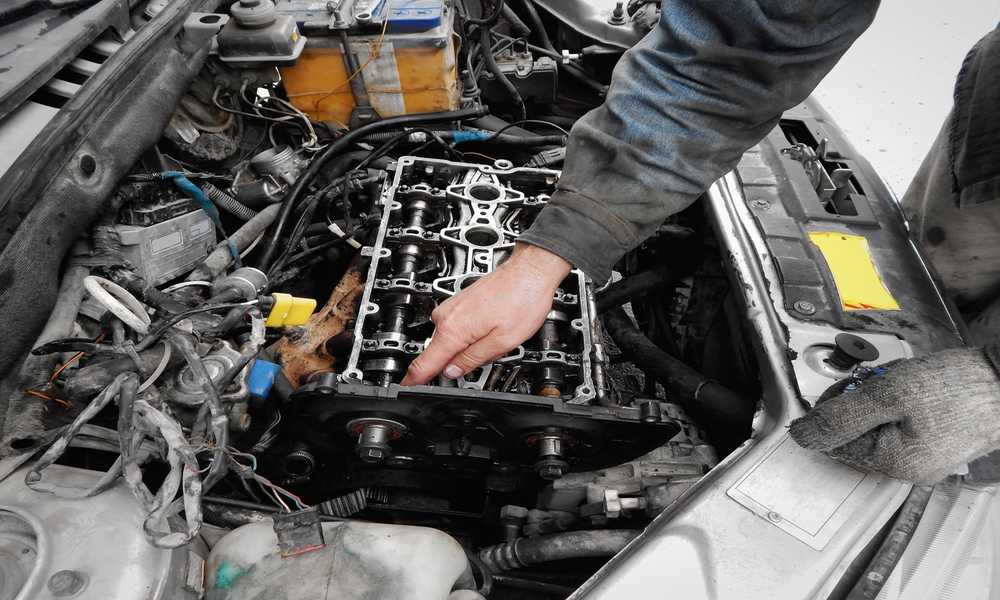Is your motor choking for air, hardly turning over? Hydrolock may be the cause of its problems. Fear not, for we shall now explain what this means and how it may be corrected.This article will explain how a engine is hydrolocked occurs, the harm it can cause, and the steps you can take to get your motor back up and running. Get ready to dive headfirst into the world of broken machinery!
Causes of a Hydrolocked Engine
1. Water

It can enter the engine in a number of ways, including driving in deep water or strong rainstorms. In the presence of water, the piston cannot complete its upward stroke, preventing the fuel-air combination from being compressed. There is an instantaneous halt in engine operation as a result of this.
Water in the combustion chamber can severely damage internal components, such as twisted connecting rods, broken pistons, and damaged valves. These fixes can be time-consuming and expensive.
Finding out if your engine has hydrolocked because of water is easy. Difficulty in starting the engine, a lack of power when driving, strange sounds from under the hood, and even water dripping from the exhaust pipe are all warning signs.
If your engine has hydrolocked, you should not drive it because doing so could cause even more damage or even cause the engine to stop working altogether. If you think your engine has hydrolocked because of water, you should get it checked out as soon as possible.
Always remember that preventing water from entering the engine is preferable to fixing it after it has hydrolocked. Be especially careful when driving in the rain and try to avoid driving through any places that have had flooding.
2. Coolant
It’s used in the engine’s cooling system, where it helps absorb heat to keep the engine from overheating. Coolant in the engine’s combustion chambers, however, is a recipe for disaster.
A burst head gasket might allow liquid to leak into the engine’s combustion chambers. There is a leak between the cylinder and the coolant passageways, causing the latter to leak into undesirable locations. A broken cylinder head or block is another possible source of the problem.
The engine could be severely damaged if the cooling system becomes hydrolocked. Unlike air or fuel, the liquid cannot be compressed when ignited by spark plugs. Pistons and connecting rods are subjected to extreme force, which can lead to deformation or even breakage.
To fix a hydrolocked engine, the underlying reason must be fixed first, such as by replacing a broken head gasket or mending cracks in the cylinder head or block. After that is fixed, all affected parts must be cleaned thoroughly before being put back together.
Avoiding a hydrolocked engine caused by coolant leaking is as easy as practicing preventative maintenance. Costly repairs can be avoided with preventative maintenance and a timely response to any indicators of trouble with the cooling system.
Finally (not finally), never ignore issues with your vehicle’s cooling system because doing so could cause water or even coolant to become trapped inside the engine, causing it to become hydrolocked. Prevent future hassles like these by keeping up with routine auto maintenance.
How to fix engine is hydrolocked?
While a hydrolocked engine is certainly an inconvenient problem to have, there are ways to fix it. This is what you must do:
Finding the root of the issue is the first order of business. Which came first, the water or the coolant? If there’s water, it probably came from the outside, like when a car drove through a puddle or when it flooded. However, if the hydrolock is caused by coolant, your car may have an internal problem.
Determine whether water or coolant is the source of the issue and proceed accordingly. If water is the problem, you should drain the intake system with a vacuum or shop vac to prevent further damage. Avoid turning the engine’s crankshaft at this time to avoid aggravating the problem.
However, if coolant is to blame for the hydrolock, finding a solution becomes more challenging. Since dealing with internal difficulties is complex and requires specific knowledge and expertise, it is best to seek professional aid in this scenario.
However, in either case, prevention is the key to a better future. Always use caution when driving in the rain, and make sure your car’s air conditioner is in good working order.
Never rush into fixing a hydrolocked engine without first consulting an expert.
What is a hydrolocked engine?

When an excessive amount of water or coolant enters the engine’s combustion chamber, a hydrolocked engine is the result. Because of this, the piston could get trapped and not move through its whole cycle.
This can prevent the engine from starting or cause it to stall while it is operating. In the event that your engine becomes hydrolocked, do not ignore the problem or try to continue driving.
A hydrolocked engine can be brought on by either water or coolant. While driving through deep puddles or flooded areas is one cause of hydrolock, coolant leaking can also cause the condition under certain conditions.
Some warning signals can help you determine if your engine is hydrolocked. Problems like the engine not starting, making strange noises, or leaking fluid are all indicators that something is wrong.
A hydrolocked engine needs immediate attention and expert help. If you choose to ignore this issue, you may end up having to pay more to fix the car’s internal components later on.
What damage is done in a hydrolocked motor?
Engines are extremely vulnerable to hydrolock and the resulting damage. The force of the trapped fluid can have devastating consequences on the engine’s internal components.
If water or a coolant gets into the combustion chamber, it won’t be able to compress like air and fuel would. Because of this, the piston and connecting rods are subjected to unnecessary stress, which could lead to damage. It will be necessary to either fix or replace these broken parts.
Furthermore, if water gets into the crankshaft and bearings, it might remove the lubricant that keeps them running smoothly. Overheating and possible seizure of these crucial parts might occur without sufficient lubrication.
Engine valves and cylinder heads are particularly vulnerable to destruction when hydrolocked. The extreme pressure created by hydraulic lockup can bend valves or even shatter the cylinder head. These problems have sophisticated and expensive solutions.
Pistons, connecting rods, crankshafts, bearings, valves, and cylinder heads can all take a serious beating if your engine hydrolocks. To avoid further engine system damage, it is crucial to promptly diagnose the problem and get it fixed.
How do I know if my engine is hydrolocked?
Unfortunately, there are several warning signals that may be present. First and foremost, if your engine suddenly dies after driving through deep water or a downpour, it’s probable that water has entered the combustion chamber.
One more sign is if the engine won’t start or starts but only after much effort. If you turn the key and nothing happens, or if the starter motor doesn’t turn over at all, it may be because water has been pumped into the cylinders instead of air and gasoline.
White smoke from the tailpipe accompanied by a pleasant odor may also indicate coolant has made its way into the cylinders. A leak in the cooling system can cause this problem.
It’s likely that hydraulic lock, produced by fluid collection inside the cylinder chambers, is to blame if your engine feels like it’s locked up and won’t turn over, even when you use equipment like a breaker bar on the crankshaft pulley bolt to manually crank it.
If you see any of these signs, stop running the engine immediately and have it checked out by a specialist. Never try to start or drive a car with a hydrolocked engine; doing so might cause serious damage and require expensive repairs.
Can you drive with a Hydrolocked engine?

Many car owners may wonder this if they experience the symptoms of a hydrolocked engine. The solution is not as simple as one may expect.
It’s risky and potentially costly to continue driving with a hydrolocked engine. Hydrolocking occurs when liquid of any kind enters the engine’s combustion chamber and prevents the piston from returning to its starting position at the end of its cycle. Bending the connecting rods, damaging the pistons, or even cracking the block are all possible outcomes.
If you try to start or drive a car with a hydrolocked engine, it could explode. The engine’s inner workings aren’t made to tolerate the pressure of trapped fluids. It’s possible that cranking the engine could lead it to seize completely.
Hydrolocking an engine is a serious problem that necessitates quick towing and inspection by a qualified mechanic. They can evaluate the level of destruction and recommend the most effective means of restoration.
In conclusion (oops! ), a hydrolocked engine is extremely dangerous and can lead to expensive repairs for your car. The safest course of action is to consult an expert when facing anything like this.
Final thoughts
Experiencing a hydrolocked engine can be a stressful and frustrating situation, but understanding the causes and potential damage can help you take the necessary steps to address it. Whether it’s due to water or coolant entering your engine, acting swiftly is crucial.
If you suspect that your engine may be hydrolocked, avoid attempting to start it as this could lead to further damage. Instead, consult with a professional mechanic who can properly diagnose and repair the issue.
Remember that prevention is key when it comes to avoiding a hydrolocked engine. Be cautious when driving through flooded areas and ensure that your vehicle’s cooling system is functioning properly.
By staying informed about the causes of a hydrolocked engine and practicing proper maintenance, you can minimize the risk of encountering this problem in the future.



